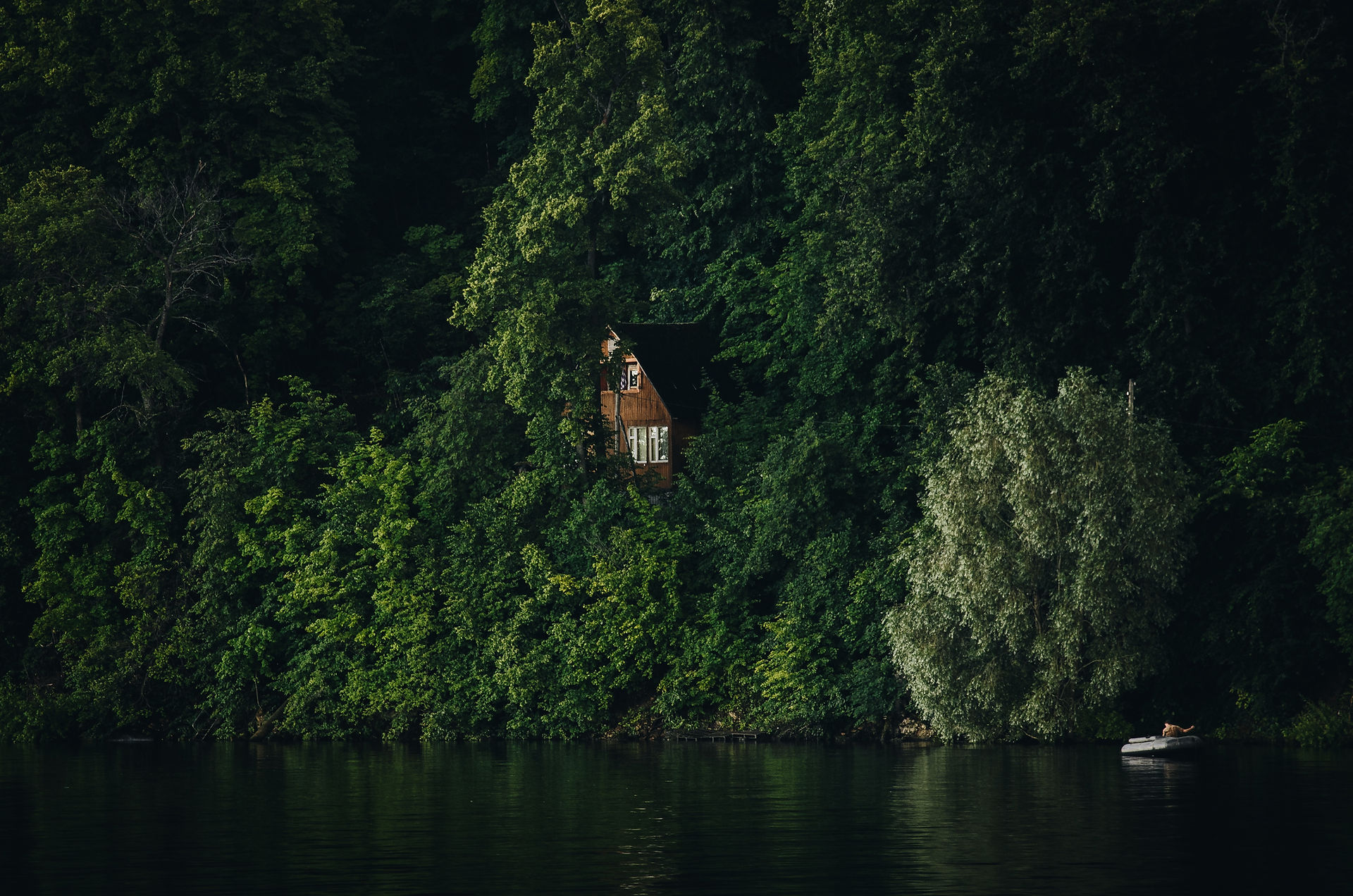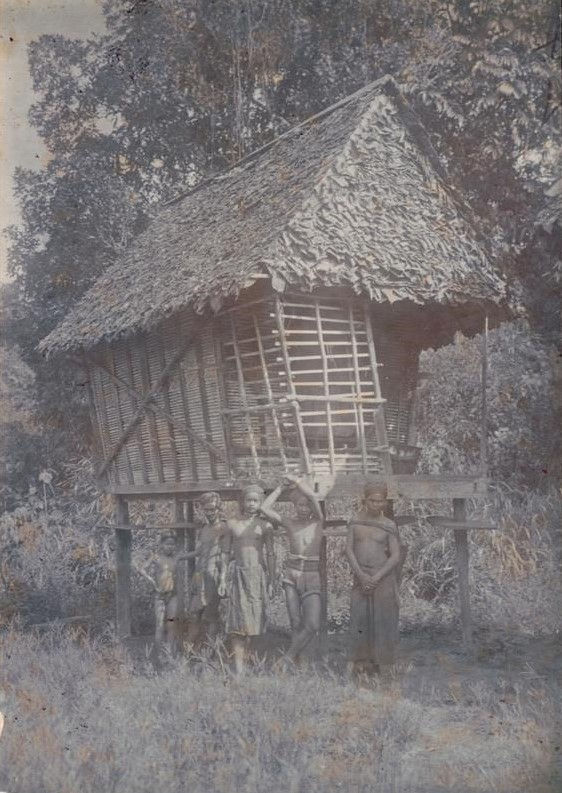

A house of an indigenous community in Malaysia, possibly Dayaks, early 20th Century,
(2008-06545).
Source: Asian Civilisations Museum.

Early 20th Century houses with dome-like roof structures, possibly Dayak's in Borneo Malay Peninsular, (2008-06544).
Source: Asian Civilisations Museum.
Home & Living
The Dayaks
The Dayaks are the biggest indigenous group of people of Borneo (Kalimantan). Also known as the Dyak or Dayuh, the early Dayaks generally led nomadic lives and are known to live in the interiors. However, there are also found to be living near the coastal areas of the main rivers such as the Pawan River in Ketapang and the Kapuas River (one of the longest river in Indonesia). Historically, the Dayaks are animistic believers; however, since the 19th century, they have converted to Islam and a majority of them are Christians (Catholics and Protestants). The Dayaks speak a variety of languages. Categorised as part of the Austronesian languages the languages spoken by their sub-ethnic group sound like Iban, Kantuk, Mualang, Seberuang, Desa (Ibanic group),and Bekatik, Selakau, Ahe, Behe (Kanayatn group). Traditionally, the Dayaks lived as group within a type of house called a “Longhouse”. Compartmentalised into rooms or bilik which are separated by walls, the bilik is owned by one family. Living under the same roof, the multigenerational family’s bilik measures on average 20 meters long and 5 or 7 meters wide; which will then be further divided into rooms that served different purposes such as a living room separated and the kitchen.